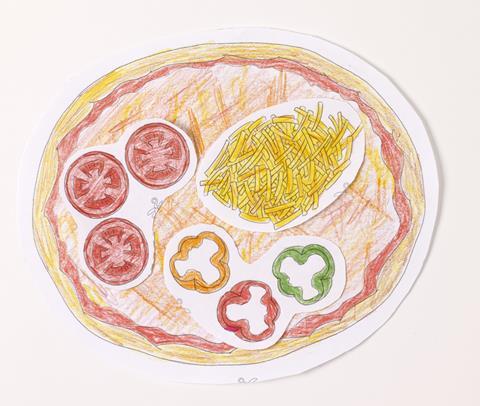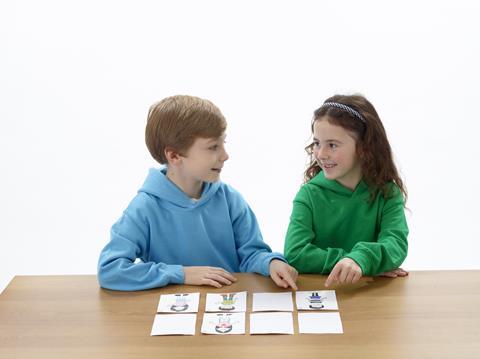Olha Madylus offers a selection of fun and practical activities you can use to help your young learners practise the vocabulary they've learned.

Pizzas
A fun way of practising food vocabulary.

- Give each student a paper plate and ask them to design their favourite pizza by drawing or cutting out and sticking pictures of the things they most like on to it. You can show them your own example with, for example, cheese, tomato, ham, pineapple and chocolate!
- If they are pre-writers, they can tell you and each other what is on their pizza. Or, if they are able to, they write the words of the ingredients next to them on the pizza. The ‘pizzas’ can be displayed on the classroom walls.
I went to market

- Get students into a circle.
- Start by saying: ‘I went to the market and I bought an apple.’
- The student to your right must repeat what you said and add another thing beginning with B.
- Keep going, with each subsequent student adding an item beginning with the next letter of the alphabet. The last student has to remember 26 things bought in the market!
Hangman
- Think of a word students learnt last lesson, e.g. mountain.
- Draw eight dashes on the board – one for each letter of the word
– – – – – – – –
- One at a time, students guess which letters may be in the word. If they are correct the letter is added to the word:
'N’ = _ _ _ n _ _ _ n
- If they guess incorrectly, the teacher draws one part of a hangman’s noose on the board

- Students can guess the whole word at any time. But the teacher wins if the whole hangman is drawn before the word is guessed.
- An alternative version of this game is known as 'snowman', and involves drawing a snowman (e.g. three snowballs for the body, two sticks for arms, a top hat, two eyes and a smile).
Pelmanism

-
Prepare separate cards with words and pictures. (See our flashcards for ideas and examples.)
-
Spread them on the floor or table, and ask children to match the words to the pictures. Once they have done this successfully, turn all the cards over and jumble them up in groups of up to six.
-
Students take turns to pick up two cards and show them to everybody. If they get a picture and the word that goes with the picture they keep the cards; if their cards do not match they put them back where they found them.
-
Students must try to remember where the cards have been put down so they can find matching pairs.
Bingo
- Collate a list of 20+ words the students know well: that they can recognise in their written and spoken form and know the meanings of. Either write the words on the board or hand out a list of the words to the students. Students must choose any nine of the words and write them onto a piece of paper in a three by three grid, e.g.:
|
tiger
|
blue
|
pen
|
|
pizza
|
ten
|
orange
|
|
chair
|
book
|
girl
|
- The teacher chooses words from the list at random and reads them aloud. If the student has the word on their paper they cross it out. As soon as a student has crossed out three words in a line – up, down or diagonally – they shout Bingo! And are the winner.
Label the classroom
Children learn from everything around them and need constant reinforcement of language. A fun way of reinforcing the written form of the words for classroom objects like door, board, window,etc is to label them.

- Write the words on card or post-it notes and as you teach the words stick them to the appropriate object or get students to label the objects themselves.
- One lesson, jumble them up and get students to re-label them appropriately.
How to teach skills
- 1
- 2
- 3
- 4
- 5
- 6
 Currently reading
Currently readingBeginning vocabulary: Practice activities
- 7
- 8








No comments yet